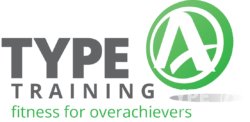Looking for an old-school method that actually delivers on strength and size? The 20-rep squat program—sometimes called “breathing squats“—has been a mainstay in strength training circles for decades.
Since the 1960s, this brutal protocol has helped lifters smash through plateaus and pack on serious muscle. It’s not for the faint of heart, but the results? Pretty hard to argue with.

The program has you do a single set of 20 squats with a weight you’d usually only manage for 10-12 reps. You’ll take deep breaths between those last, burning reps to somehow keep going.
Popular posts:
This classic training approach usually shows up three times a week, and you’ll tack on a few basic compound exercises to round things out.
What sets this program apart isn’t just how simple it is—it builds mental grit as much as muscle. Plenty of famous bodybuilders like Arnold Schwarzenegger and Reg Park swore by it for their legendary legs.
The intensity triggers your body to pump out growth hormone and testosterone, which is exactly what you want for big gains.
Key Takeaways
- The 20-rep squat program means pushing through one tough set of 20 squats with a heavy weight, three times a week.
- Your body responds to this challenge by releasing growth hormones that help you build muscle and strength all over.
- You’ll need good food, solid recovery, and the guts to fight through those final, brutal reps if you want to see results.
What Is the 20-Rep Squat Program?

The 20-Rep Squat Program is a classic strength routine built around one grueling set of 20 barbell back squats with a tough weight. Lifters have turned to this old-school approach for decades to chase serious size and strength.
History and Origins
This program goes back to the late 1960s, thanks to John McCallum and his “Keys to Progress” articles. People called it “Squats and Milk” because trainees would drink a gallon of milk a day while running the program. Wild, right?
During the golden era of bodybuilding, champions threw high-rep squats into their routines. Tom Platz, though not the creator, became famous for his insane leg development and love of high-rep squats.
The program’s no-nonsense style has kept it alive for over 50 years. That’s a long time for a training method to stick around.
Core Principles
The core idea is simple: do one set of 20 back squats with a weight you’d usually only get for 10 reps. That’s where the “breathing squat” nickname comes in.
Here’s the basic rundown:
- Pick a challenging weight (usually your 10-rep max)
- Grind out 20 reps with that weight
- Take big, deep breaths between the tough reps at the end
- Train three times a week—typically Monday, Wednesday, Friday
- Add 5-10 pounds to the bar every week
After squats, you’ll hit a few more compound lifts, but the 20-rep set is always the main event. Most people bump up their calories, too, since recovery and muscle growth demand it.
How It Differs From Traditional Squat Programs
Most squat programs have you do several sets with different rep ranges. The 20-Rep Squat routine crams all that intensity into one massive set. That’s a different kind of challenge, both physically and mentally.
Instead of 3-5 sets of 5-8 reps, you’re pushing one set to the brink. It’s a mental battle as much as a physical one—getting to rep 20 with a heavy bar on your back is just a different animal.
Frequency stands out, too. While most modern plans have you squat once or twice a week, the 20-Rep Squat Program hits squats three times weekly. That’s a lot of stimulus for growth, and you’re always chasing progressive overload—more weight, same reps, every week.
Benefits of the 20-Rep Squat Program
The 20-rep squat program brings results with a simple, no-nonsense challenge. You’ll see big improvements in both your body and your mindset.
Muscle Mass and Size Gains
This program is a powerhouse for gaining weight and strength fast. Doing 20 hard squats in a row with a heavy weight creates so much muscle tension that your body releases a flood of growth hormone and testosterone.
Those hormones drive muscle hypertrophy—just a fancy way to say muscle growth. You’ll especially notice changes in your:
- Quadriceps
- Hamstrings
- Glutes
- Lower back
- Core
It works because it mixes heavy weights with lots of reps. That combo forces your body to adapt and add muscle. Plenty of folks claim they gain 10-15 pounds of muscle in just six weeks on this plan.
Strength Improvements
Few programs can touch the 20-rep squat when it comes to raw strength gains. If you want fast size and strength, this is about as direct as it gets.
Your strength goes up because you’re always:
- Adding weight to the bar—progressive overload, plain and simple
- Training your nervous system to fire up more muscle fibers
You push past what you thought you could do. Taking a weight you’d normally squat for 10 reps and hitting 20 changes your body and your mindset. That’s what people mean by “functional strength”—it actually helps you in real life, not just in the gym.
Most lifters see their squat numbers jump by 20-30% after a full cycle. You’ll probably notice your deadlift and presses get a boost, too.
Cardiovascular and Endurance Advantages
Even though it’s a strength program, the 20-rep squat routine sneaks in some real cardio benefits. 20-rep breathing squats tax your endurance and your lungs, not just your legs.
The breathing between reps isn’t just for show:
- You get a quick breather during the set
- You create a cardio challenge that feels a lot like HIIT
Your heart rate spikes during a real 20-rep set. That means you’re working your:
- Heart
- Lungs
- Oxygen use
- Recovery between workouts
Plenty of people say their conditioning for other sports or daily life improves after this program. That mental toughness you build? It sticks with you, whether you’re running, cycling, or just chasing your kids around.
How the 20-Rep Squat Program Works
The 20-Rep Squat program is a tried-and-true way to build powerful legs and more muscle all over. You’ll do one punishing set of 20 squats several times a week, always trying to add weight.
Workout Frequency and Scheduling
Most people run this program three times a week, with rest days in between. Monday, Wednesday, and Friday is the classic setup, which gives your legs and nervous system a chance to recover.
You’ll start each session with your 20-rep squat set, then hit a few basic compound lifts for the rest of your body. It’s a full-body workout, not a split.
Trust me, you’ll need those off days. Recovery isn’t just a suggestion here—it’s mandatory if you want to keep making progress and avoid burning out.
Set and Rep Structure
The heart of the program? One set of 20 reps with a tough weight. People call it a “breathing set” or even a “widow maker” for a reason.
Here’s how it usually goes:
- Load up the bar with your 10-rep max
- Crank out the first 10 reps as normal
- Take deep breaths between each of the last 10 reps—sometimes you’ll need three or four breaths just to keep going
- Don’t rack the bar until you hit 20, no matter how much you want to
After squats, you’ll move to 3-4 more exercises—bench press, rows, overhead press—doing 3 sets of 8-12 reps each for a well-rounded workout.
Selecting the Right Weight
Picking the right weight can make or break your progress here. Start by figuring out your 5-rep max (5RM) for the squat.
You’ll then use about 75% of that number for your 20-rep set.
For example:
- If your 5RM is 200 pounds, start with 150 pounds
- Add 5-10 pounds each week
- By week 6, you might be handling 180-200 pounds for all 20 reps
This steady increase is what really drives the big gains people talk about with this program. When you hit rep 15, the weight should feel impossible, but that’s where grit and breathing come in.
Don’t go crazy and pick a weight that’s too heavy on day one. The magic is in the gradual build, not in getting flattened right out of the gate.
Proper 20-Rep Squat Technique
The 20-rep squat is a grind, both mentally and physically. If you dial in your technique, you’ll get more out of it and stay safe—because honestly, this set can be a beast.
Breathing Methods and Deep Breaths
Breathing right is your lifeline during the notorious “widow-maker” set. Take big, deep breaths between each rep and use the top position to recover a bit.
This is why people call them “breathing squats.” For the first handful of reps, you might breathe normally.
As you tire out:
- Reps 10-15: Take 1-2 deep breaths at the top
- Reps 15-18: Go for 3-4 deep breaths
- Reps 19-20: You could need 5+ breaths at the top
Take a huge inhale before you drop down, brace your core, and hold your breath through the rep. Only exhale after you stand up again.
This pattern keeps your core stable and gives you a second to gather yourself between reps. If you have a lifting belt, it can help your abs brace against something during those tough breaths.
Full Squats vs. Partial Squats
If you want the 20-rep program to work, you’ve got to do full squats. That means lowering until your thighs are at least parallel to the floor—ideally a bit below.
Partial squats just won’t cut it if you’re chasing the legendary growth this program is known for. Full range of motion:
- Activates more muscle fibers
- Triggers a bigger hormonal response
- Builds real-world strength
- Improves mobility
It’s tempting to cheat the depth as you get tired, but don’t. Your last rep should go just as deep as your first.
Some folks find that a slightly wider stance and turning the toes out a bit makes hitting depth easier for all 20 reps.
Barbell Placement and Setup
Your setup matters—a lot. Most people do best with a classic high-bar back squat for this program.
Set the bar across your upper traps, not your neck. Make a “shelf” by squeezing your shoulder blades together and keeping your chest up.
- Grip the bar just outside shoulder width
Before you unrack, pause and:
- Set your feet shoulder width or a tad wider
- Get your spine in a neutral position
- Take a big breath and brace your core
Lower yourself with control, and drive up through your heels. As you start to hit your limit on those last reps, keeping your form tight gets even more important.
Supporting Exercises for Balanced Strength
The 20-rep squat program is squat-heavy, but you need other lifts to stay balanced. These extra moves help you avoid muscle imbalances and boost your overall results when you combine them with your tough squat days.
Compound Movements
Deadlifts are a must if you want to hit your backside muscles, which squats alone might miss. Do conventional deadlifts once a week—3-5 sets of 5-8 heavy reps does the trick.
On lighter days, Romanian deadlifts are a solid alternative. They target your hamstrings and glutes but still keep your lower back working.
Barbell Row Programming:
- Day 1: Conventional Deadlifts – 3×5
- Day 2: Rest or Light Activity
- Day 3: Romanian Deadlifts – 3×8
These compound lifts support your squats by working the muscles on the other side of your body. That balance can help you avoid the classic forward-leaning squat posture.
Your leg day feels a lot more complete with these mixed in, giving you better development all around.
Upper Body Assistance Work
Barbell bench press is your main upper body push—try 3 sets of 8-12 reps at a tough weight, twice a week.
Dumbbell shoulder press builds up your delts and makes it easier to hold the bar during squats. Swap these in for some bench sessions to keep things even.
Upper Body Pull Movements:
- Pull-ups or chin-ups: 3 sets to near failure
- Barbell pull-overs: 2-3 sets of 10-12 reps
Pull-ups hit your lats and upper back, while chin-ups focus more on your biceps. If you can’t do full pull-ups yet, go for assisted versions or inverted rows.
Dips add triceps and chest work that rounds out your pressing. The old-school method keeps things simple—compound moves over isolation lifts.
Don’t let your upper body lag behind, even if squats are the star of the show.
Core and Accessory Lifts
Strong core = better squats. Decline bench sit-ups work well—2-3 sets of 15-20 reps is plenty.
Weighted planks build the kind of isometric strength that carries over to heavy squats. Hold them for 30-45 seconds with a plate on your back.
Simple Core Circuit:
- Decline sit-ups: 15 reps
- Weighted planks: 30 seconds
- Side planks: 30 seconds each side
- Rest 60 seconds, repeat 2-3 times
These moves give you the core stability you need for hard training in the 20-rep program.
Accessory lifts like calf raises and reverse hyperextensions hit the smaller muscles that help your big lifts. Keep these light and high-rep so you don’t burn out.
Nutrition Strategies for Maximum Results
Nutrition is a huge deal when you’re grinding through the 20-rep squat program. What you eat will show up in your recovery, growth, and how you feel during those brutal sets.
Caloric Needs and Bulking Up
If you want to see real results, you need to eat more than you burn. Most people should aim for 300-500 extra calories above maintenance, but hard gainers might need 500-800 more.
Weigh yourself every week. If you’re not gaining 0.5-1 pound a week, bump up your calories a bit. Stick to foods that actually fuel your body and help you recover.
Carbs are your friend here. They refill your muscle glycogen after those killer squat sessions.
Protein Intake and Requirements
Protein is the building block for muscle, especially with a program this tough. Shoot for 1.6-2.2 grams per kilogram of bodyweight daily.
If you’re 180 pounds, that’s about 130-180 grams of protein. Spread it out over 4-6 meals so your body gets a steady supply of amino acids.
Good protein sources:
- Lean meats (chicken, beef, turkey)
- Fish and seafood
- Eggs
- Dairy (Greek yogurt, cottage cheese)
- Plant-based options (legumes, tofu, tempeh)
Try to get a protein-packed meal in within 1-2 hours after your squat workout. It really helps with recovery.
The ‘Squats and Milk’ and GOMAD Diet Approaches
The classic “Squats and Milk” strategy goes hand-in-hand with the 20-rep squat program. GOMAD (Gallon Of Milk A Day) is the extreme version.
GOMAD gives you about 2,400 calories, 123g protein, 187g carbs, and 127g fat. It’s especially helpful for naturally skinny folks who just can’t seem to gain weight.
Full-fat milk has a mix of protein, carbs, fats, and micronutrients that support tough training and recovery. The old-school crowd swears by it for rapid muscle gains.
If a whole gallon sounds like too much, try half a gallon. You’ll still get a solid nutrition boost—without as much risk of stomach trouble.
Sample Meal Plan
Here’s a practical meal plan to help you tackle the 20-rep squat program. You’ll want to adjust portions to match your own calorie needs—everyone’s a bit different.
Breakfast (7:00 AM)
- 4 whole eggs, scrambled
- 1 cup oatmeal with a tablespoon of honey
- 1 cup whole milk
- 1 banana
Mid-Morning (10:00 AM)
- Protein shake (2 scoops whey)
- 1 cup whole milk
- 2 tablespoons peanut butter
- 1 apple
Lunch (1:00 PM)
- 8 oz grilled chicken breast
- 2 cups brown rice
- 1 cup vegetables
- 2 tablespoons olive oil
Pre-Workout (4:00 PM)
- 1 cup Greek yogurt
- 1 cup berries
- 2 tablespoons granola
Post-Workout (6:30 PM)
- Protein shake with 2 cups whole milk
- 1 banana
- 2 tablespoons honey
Dinner (8:00 PM)
- 8 oz lean steak
- Large baked potato with 2 tablespoons butter
- 2 cups vegetables
- 1 cup whole milk
This nutrition plan gives you the caloric surplus and protein you’ll need to survive those brutal squat sessions and actually build muscle.
The Role of Recovery and Rest in Progress
Recovery matters just as much as what you do under the bar. Your body has to heal and come back stronger between these tough workouts.
Importance of Sleep
Sleep is when your body gets most of its repair work done. During deep sleep, you release growth hormone, which helps rebuild all those muscle fibers you tore up squatting.
Shoot for 7-9 hours of solid sleep every night while you’re on this program. If your sleep is lousy, you’ll probably see your strength gains drop off.
Try to keep a regular sleep schedule—go to bed and wake up at the same time each day. It’s not glamorous, but it really does help your recovery.
Some simple sleep tips to try:
- Keep your bedroom cool and dark
- Avoid screens for an hour before bed
- Don’t drink caffeine after noon
- Use relaxation techniques if you can’t fall asleep
Rest Days and Overtraining Prevention
The 20-rep squat program usually gives you three workouts a week and four full rest days. That’s not accidental—it’s essential.
Your muscles often need 48-72 hours to recover after these sessions. If you rush back in too soon, you risk overtraining and maybe even injury.
Keep an eye out for overtraining signs like:
- Constant fatigue
- Performance drops
- Irritability
- Higher resting heart rate
- Achy joints
If you notice these, it’s probably time for an extra rest day or even a lighter week.
Mobility and Warm-Up Routines
Mobility work and solid warm-ups can make a big difference. Good prep helps your squats feel better and keeps injuries at bay.
Start each session with 5-10 minutes of easy cardio to get the blood moving. Then, hit some dynamic stretches for your hips, ankles, and shoulders.
Some useful mobility moves:
- Hip circles
- Ankle rotations
- Bodyweight squats
- Walking lunges
- Leg swings
Before your main set, do 2-3 lighter warm-up sets. Begin with about half your working weight and ramp up gradually.
These warm-ups shouldn’t wear you out—they’re just to get your body ready for the real work.
Programming Tips and Advanced Considerations
Running the 20-rep squat program well takes a bit of planning and some personal tweaks. The way you progress and adjust things will really shape your results.
Adjusting for Hard Gainers
If you’re a hard gainer and struggle to put on size, this program can work wonders—but you’ll need to tweak it.
First, eat more. Bump your calories up by 500-1000 above maintenance. A lot of folks who succeed with this routine go all-in on a big eating phase.
Focus on quality food, too: try to get 1.5-2 grams of protein per pound of bodyweight, and don’t skimp on carbs.
Rest between sessions might need to be longer for you. Try:
- Starting with just 2 weekly workouts
- Adding an extra rest day after really tough sessions
- Keeping your sleep dialed in (shoot for 8+ hours)
Adding creatine monohydrate (5g daily) can help boost recovery and performance on those tough squat sets.
Progression and Tracking
Tracking your progress is key here. Use a notebook or an app to jot down:
- Weight on the bar
- How many reps you actually hit
- Rest time between breaths
- How you felt between sessions
The classic progression adds 5 pounds every workout. That’s a lot for most people, honestly.
A more realistic approach:
- Pick a weight you can grind out for 20 reps (barely)
- Add 2.5-5 pounds only after you nail all 20 reps with good form
- Expect progress to slow after three or four weeks
Track your measurements, not just your weight. Your thighs might grow faster than the scale moves.
Plateau Busting Techniques
When you hit a wall with the 20-rep squat program, try these ideas to break through:
Refine your breathing technique: Take three deep breaths between reps 10-15, then up it to five breaths between reps 16-20. It buys you more time under the bar and helps with fatigue.
Other tricks to shake things up:
- Make 5-pound jumps every other workout, not every session
- Try wave loading—drop the weight by 10% for one session, then build back up
- Add band resistance just for the last five reps
Pre-exhaust method: Knock out 15-20 bodyweight squats before your loaded set to fire up your nervous system.
Chasing muscle failure every session isn’t necessary. Push until your form breaks down, not until you’re totally wiped, for better long-term gains (source).
Common Mistakes and How to Avoid Them
The 20-rep squat program is no joke, and it’s easy to mess up your progress if you’re not careful. Sloppy form, not eating enough, or skipping rest can all trip you up (here’s why).
Poor Technique
Good form isn’t optional with 20-rep squats. Lots of lifters get sloppy as they tire out during those brutal last reps.
Watch out for these mistakes:
- Letting your lower back round
- Knees caving in
- Rising onto your toes
- Looking way up
- Not squatting deep enough
Pick a weight you can actually control. Film yourself to catch breakdowns, or use a mirror for quick feedback.
Brace your core before every rep. Keep your chest up and your spine neutral. If your form falls apart after a certain number of reps, that’s your technical limit for now.
Think about working with a coach or a savvy training partner—they’ll spot things you might miss, especially when you’re grinding through tough reps.
Insufficient Nutrition
This program puts a huge demand on your body, so you’ve got to fuel it right. A lot of folks just don’t eat enough for how hard they’re training.
Bump your calories up—most people need 500-1000 extra per day to really recover and grow.
Focus on these nutrition basics:
- Protein: 1.6-2g per kg of bodyweight
- Carbs: Plenty for energy and recovery
- Healthy fats: Keep hormones in check
- Hydration: Don’t let it slide
Timing helps, too. Eat a carb-heavy meal about 1-2 hours before squatting. Get some protein and carbs right after lifting to kickstart recovery.
Don’t ignore your micronutrients. Load up on veggies and fruit—they do more than you might think for recovery and performance.
Neglecting Recovery
Recovery is where growth actually happens. Yet, a lot of lifters on the 20-rep squat program just don’t make it a priority.
This program puts your body through serious stress. You really need to go above and beyond with your recovery.
Sleep matters even more when you’re running this program. Shoot for 8-9 hours every night if you want to get the most out of your growth hormone and tissue repair.
Inadequate rest will stall your progress fast, or worse, send you backward.
Active recovery between sessions helps a lot. Try things like:
- Light walking
- Gentle stretching
- Contrast showers
- Massage therapy
- Foam rolling
Keep an eye on how you feel. If you’re noticing joint pain that won’t quit, dropping numbers, or just feeling wiped out, it’s a red flag—your recovery’s falling short.
It’s tempting to tack on extra training, but honestly, you need to hold back. The 20-rep squat program is brutal enough on its own, and if you don’t respect your recovery, you’re not going to get the results you’re after.
Is the 20-Rep Squat Program Right for You?
The 20-rep squat program delivers impressive strength and size gains, but it’s definitely not for everyone. Your current fitness level, goals, and physical condition all matter a lot when deciding if this program fits you.
Who Can Benefit Most
Intermediate to advanced lifters usually get the best results from the 20-rep squat program. If you’ve been training for at least 6-12 months and really know your squat form, you might be ready.
Hardgainers or folks who just can’t seem to put on muscle often see great changes. The high-intensity style can smash through stubborn plateaus when nothing else works.
Athletes looking for all-around strength gains get a solid boost from the hormone response this program triggers. There’s a noticeable jump in testosterone and growth hormone, which helps with total body growth.
You’ll get the most out of it if you can stick with the whole thing. The three workouts per week setup demands real commitment—and plenty of downtime between sessions.
Potential Risks and Precautions
When you’re lifting heavy, proper form isn’t really optional—it’s essential. Start with moderate weight until your technique feels solid, not just for safety but to actually hit the right muscles.
If you’ve got knee, back, or hip issues, talk to your doctor before jumping in. The 20-rep squat program is no joke; it’ll put a lot of stress on your joints and connective tissues.
Safety measures you’ll want to use:
- Always set up in a power rack with safety pins.
- If you can, get a spotter—seriously, it helps.
- Start lighter, around 60-70% of what you’d use for 10 reps.
- Don’t forget to breathe right; it matters more than you’d think.
This program will wipe you out if you’re not careful. Try to get 7-9 hours of sleep each night, hit your protein goals (1.6-2g per kg of bodyweight), and maybe dial back on other tough workouts for a bit.
Pay attention to your body—injury prevention is about being honest with yourself. Muscle fatigue is normal, but sharp pain or weird joint aches? That’s your cue to lighten the weight or check in with a pro.















